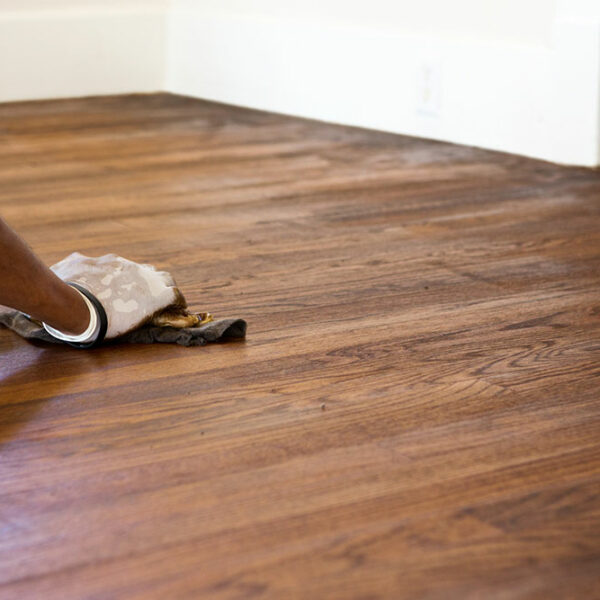A Comprehensive Guide to Wood Refinishing
If you want to revive your vintage furniture, hardwood floors, or kitchen cabinets, wood refinishing is a cost-effective and eco-friendly way to breathe new life into your woodwork. Below mentioned are some things to consider when refinishing your wooden furniture.
Understanding the wood refinishing procedure
Wood refinishing involves several steps to transform worn-out wood surfaces into stunning focal points. Here’s a breakdown of the typical wood refinishing procedure:
Assessment
The journey begins with a thorough assessment of the wood surface.

Preparation
Before any refinishing, the wood surface must be prepared. This involves cleaning, sanding, and ensuring a smooth and even canvas for the new finish.
Staining (Optional)
If you desire a different wood color or want to enhance the existing one, staining is an option. This step allows you to customize the appearance of your woodwork.
Application of finish
The finish can vary depending on your preferences and the wood type. Common finishes include polyurethane, varnish, shellac, or lacquer. Each finish has its unique characteristics, including durability and sheen level.
Buffing and polishing
After the finish dries, professionals buff and polish the surface to achieve a smooth and glossy appearance.
Quality inspection
The final step involves a quality inspection to ensure the wood refinishing meets your expectations.
Wood refinishing methods
Wood refinishing professionals employ various methods, depending on the project and one’s preferences:
Sand-and-refinish
This method involves sanding down the existing finish and applying a new one. It’s suitable for most wood surfaces, including floors, cabinets, and furniture.
Chemical stripping
Chemical stripping is an effective method for removing old finishes, paint, or stains. It’s commonly used on antique furniture.
Re-coating
Re-coating entails applying a new finish layer without thoroughly sanding down the existing one. It’s ideal for maintaining the wood’s current appearance.
Restoration
Restoration focuses on preserving and enhancing the wood’s natural beauty. This method is often used for antique or vintage pieces.
Spray application
Professionals use a spray gun to apply the finish evenly. This method is highly efficient for larger surfaces like hardwood floors, where an even coat is essential for a consistent appearance.
French polishing
This technique is often used on fine wooden furniture. It involves applying shellac with a pad, creating a glossy and lustrous finish. French polishing is known for enhancing the natural beauty of wood.
Hand rubbed finish
This meticulous method involves applying the finish by hand, typically with a cloth. It allows for precise control over the finish’s thickness and appearance. Hand-rubbed finishes are often used on high-end furniture.
Bleaching
In cases where you want to lighten the wood’s color, bleaching can be employed. This method effectively removes or lightens the existing color or stains, allowing you to start with a clean canvas.
Factors influencing the cost of wood refinishing
The cost of wood refinishing can vary significantly based on several factors:
Type of wood
The wood species you’re refinishing plays a role in cost. Exotic or rare woods may require more labor and higher-end finishes, increasing the overall cost.
Surface area
Larger surfaces, such as hardwood floors, will naturally cost more to refinish than smaller items like a wooden table.
Condition
If your wood surfaces are heavily damaged or require extensive repairs, the cost will rise due to the additional labor and materials needed.
Finish type
Different finishes come with varying price tags. High-end finishes tend to be more expensive than standard ones.
Additional services
Some projects may require extra services like staining or custom finishes, which will add to the total cost.
Looking for “wood refinishing near me”?
Locating wood refinishing nearby is a straightforward process with the help of the internet and a few other methods. Here’s how:
Online search engines and business directories
Use your preferred search engine, like Google, Bing, or Yahoo, to look for wood refinishing nearby. Type “wood refinishing near me” in the search bar and press enter. Alternatively, you can visit online business directories like Yelp, Yellow Pages, or Angie’s List. Once on the directory website, enter “wood refinishing” or “furniture refinishing” in the search field and add your city or ZIP code location in the designated location field. This will give you a list of businesses that offer wood refinishing services in your area.
Local business directories
The local business directories are often very helpful, providing you with a list of businesses that you might not be able to find through other means. Check with your local chamber of commerce or city government website to find out if your town has an online directory. They may be able to provide you with a link or point you in the right direction to start your search.
Visit home improvement stores
If you’re looking for local contractors or services for wood refinishing projects, you might want to check out bulletin boards or pamphlets at nearby home improvement stores or lumberyards. These often feature helpful information and business cards that can connect you with skilled professionals in your area.
Contact woodworking associations
Reach out to woodworking or furniture-making associations in your area. They may have member directories or be able to recommend skilled professionals.
Wood refinishing offers a range of benefits, from revitalizing your living space to preserving cherished heirlooms. By understanding the procedure, costs, and methods involved, you can make informed decisions when it comes to your wood refinishing projects.





